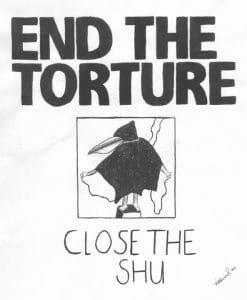by Jose H. Villarreal
“Whoever sides with the revolutionary people is a revolutionary. Whoever sides with imperialism, feudalism and bureaucrat-capitalism is a counter-revolutionary. Whoever sides with the revolutionary people in words only but acts otherwise is a revolutionary in speech. Whoever sides with the revolutionary people in deed as well as in word is a revolutionary in the full sense.” – Mao Zedong, “Closing Speech at the Second Session of the First National Committee of the Chinese People’s Political Consultative Conference” delivered June 1950

If we look to any uprising in world history we will see that such rebellions, although they may have included various nationalities, are usually attributed to the dominant force in that rebellion. Rebellions take on the oppression, and those who arise lend their voice in the struggle, but the majority of those contributing add the flavor and character of the uprising and capture the uprising in their voice for the “world.”
This can be seen during the U.S. war on Mexico in 1846 where U.S. troops initiated war on the Mexican people. Although there were non-Mexicans who sided with the Mexican@s, history framed it as the U.S. war on Mexico.
The Watts uprising in the 1960s is seen as a largely New Afrikan uprising even though there were other nationalities, including Chican@s, who took part. This is because the New Afrikans were the majority of the social forces involved.
The same can be said of the LA Rebellion in the early 1990s, where even on footage today you can clearly see not only New Afrikans but Chican@s, Mexican@s and others openly rising up on camera, and yet it is seen as a Black rebellion for the most part. Again New Afrikans were the majority of the participants in that struggle.
Cinco de Mayo commemorates the Battle of Puebla in which the Mexican General Ignacio Zaragoza was victorious over French forces in 1862. Today it is still celebrated as a Mexican victory over European imperialism, but it wasn’t all Mexicans, for many of those who fought were indigenous people who belonged to the First Nations of Mexico. Cinco de Mayo is considered a Mexican victory because it was a majority of Mexicans who were the dominant force in that battle.
The recent Ferguson, Mo., uprising is the same, where we saw on the news many non-Black people and groups who went out there and participated in the uprising, but it was largely New Afrikan participants who made it happen, so it is rightly considered a Black rebellion.
This can be seen throughout history. The dominant force in an event shapes the event and shapes the character of the struggle. The same can be said of prison struggles.
Birth of Chican@ Prisoners Day

On July 8, 2013, Chican@ prisoners en masse along with prisoners of other nationalities began a prison hunger strike which was spearheaded in the Pelican Bay SHU. The control unit at Pelican Bay is where the most repressive conditions in the state prison system exist and at the time of the strike was 80 percent Chican@ populated.
This was a Chican@ prison strike. Chican@s were the backbone of this struggle and it made WORLD HISTORY as the largest and longest hunger strike ever. This was the day Chican@ prisoners stood up and spoke to the world and, as a result, long-term isolation was transformed and most, myself included, were released from SHU. This is what mobilizing the imprisoned Chican@ nation looks like.
It’s necessary to frame this battle at Pelican Bay as a victory for Chican@ prisoners against the state. It was also a victory in the larger class struggle between all prisoners and the oppressor nation as well as the First World Lumpen vs. U.S. imperialism. Although we are not free, we dealt them a blow.
For these reasons it’s important that we see July 8 as Chican@ Prisoners Day. It was the day that we stood up and were victorious in struggling against our national oppression inside the pintas. It was also the day Chican@ prisoners from all parts of Califas and from all lumpen organizations and survival groups stood up together en masse.
How to celebrate Chican@ Prisoners Day
For Chican@ prisoners, this is a day of harmony and cooperation where we educate ourselves and others on our history of struggle. It is a day to reflect on where we come from and what our future will look like. It’s a time to strengthen our commonality and deepen our understanding of us as an oppressed nation.
Some will find ways to promote prison activism on this day to acquire social justice in particular pintas, while others will hold workshops on appeals or the legal arena. The event of July 8, 2013, will surely be taught to others on this day.
Our supporters outside of U.S. prisons will hold peaceful activist actions in support of Chican@ Prisoners Day. They will rightly understand that Chican@ Prisoners Day is a day where we remember Chican@ prisoners’ contributions to make U.S. prisons obsolete and battle oppression for ALL prisoners. It is a day when outside activists find ways to better collaborate with prisoners and to support Chican@ resistance to injustice in U.S. prisons.
This day should cultivate the collaboration of peaceful activism on both sides of the prison walls while acknowledging the contributions of imprisoned Aztlan to build a better society for all lovers of freedom.
Que Viva Aztlan!
Send our brother some love and light: Jose Villarreal, H-84098, PBSP B4-210, P.O. Box 7500, Crescent City CA 95532.





